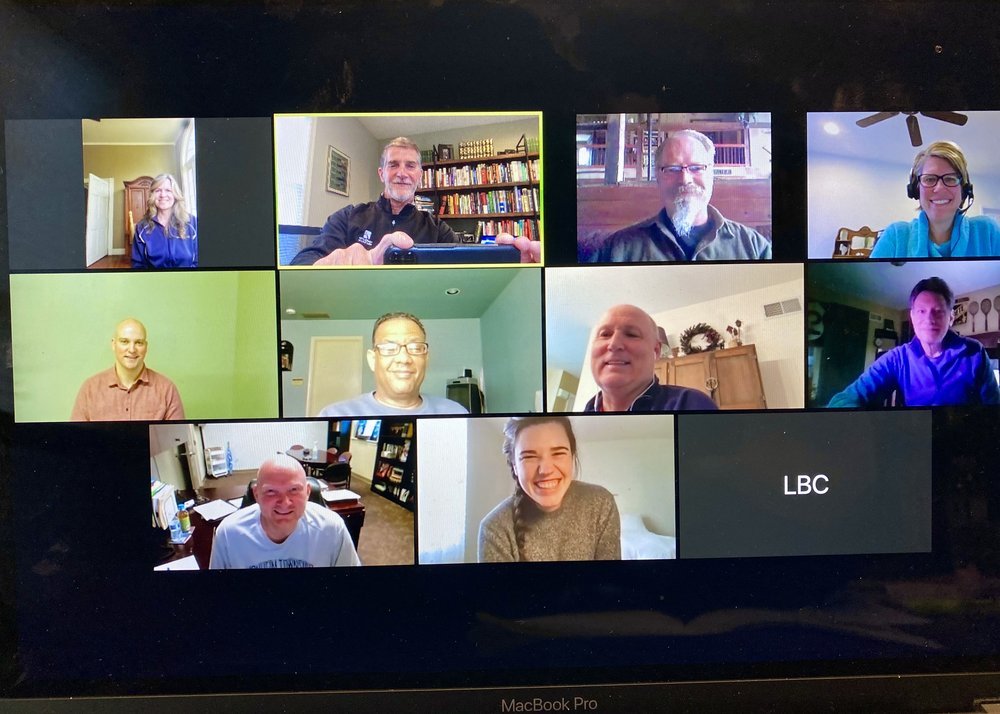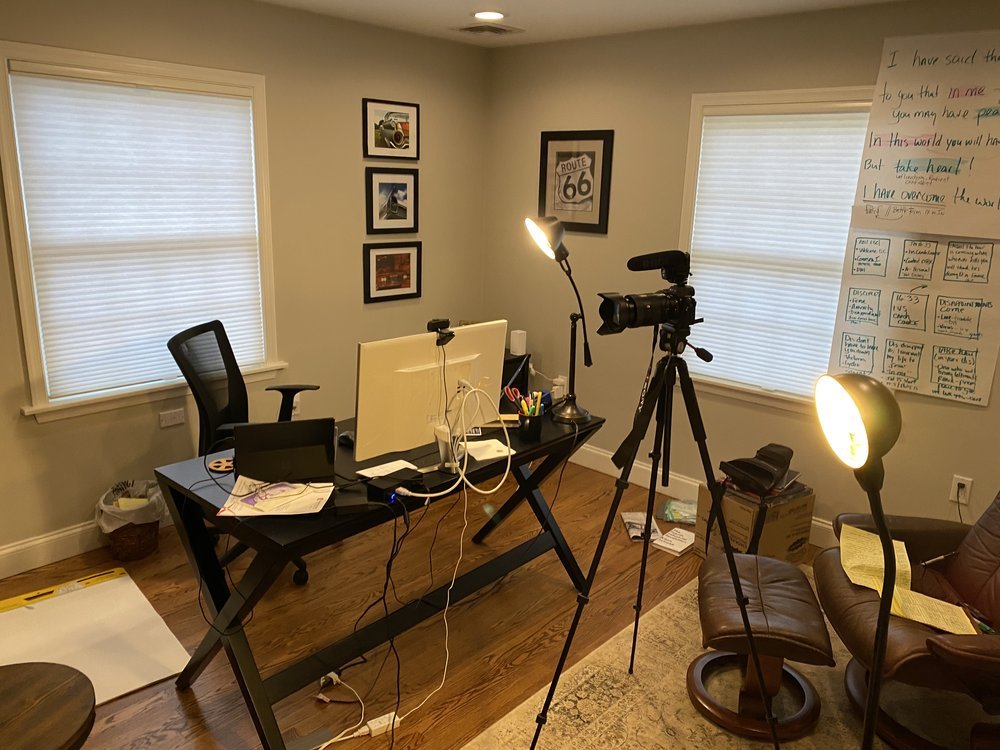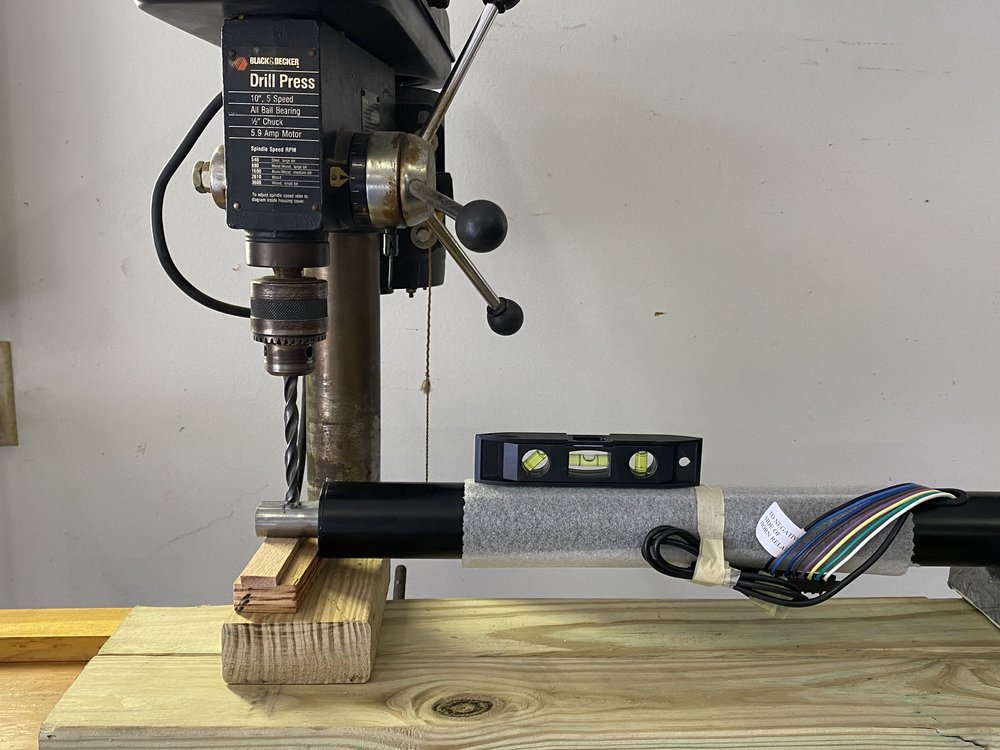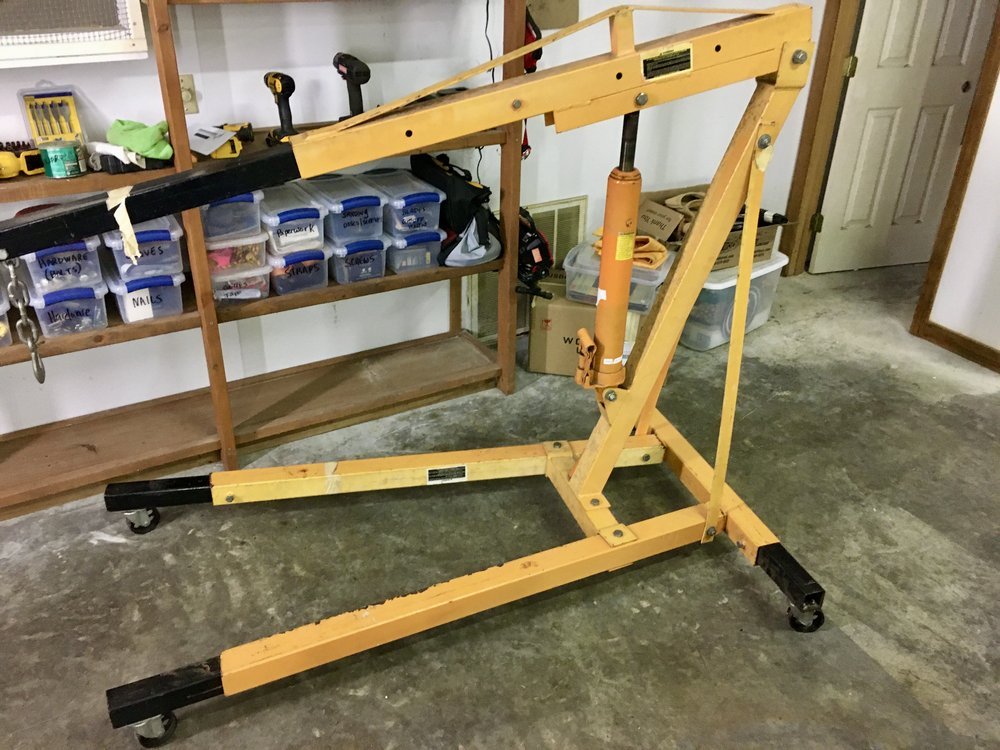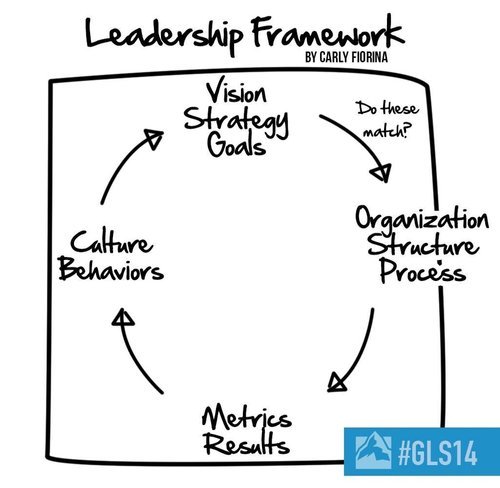10 Things "Car Guys" Teach Me About Leadership Part 2 - Tools
So why is a college president writing about leadership and using hot rodding to make his point? Great question!
The Backstory
If you missed Part 1 of this post (read it here), in the early days of COVID my life, like yours, was on hold. I was leading from my home office: coordinating production of regular communication videos, conducting Zoom meetings, and spending time on the phone.
As you can see below, I like to think on big sheets of paper. My office walls were plastered with my thinking . . . and being a hot rodder, I was feeling the “NEED” to have a project car. I had a hot rod at our family home in Arkansas and a late model go-fast vehicle in the garage in PA, but as I told Shannan, my ever-loving, always-persevering wife of over 40 years, “I ‘NEED’ a car I can tinker on.”
My high school years were the 70’s and for some reason I had the crazy notion that getting a twin-cam Cosworth Vega would be really cool. And somewhere in those early days of Covid my interest in cars collided with my passion for leadership.
As I was grappling with how our institution was going to weather this crisis and come out stronger on the other side, I was also thinking about how I was going to get down to Florida and take a look at this Cosworth Vega I found online and was now my occasional daydream. So there in that convoluted mix, our team kept working to “figure it out,” I chased a car, and the idea for this post was born. Sometimes it helps to have the backstory.
By the way, about that Cosworth Vega. I bought it ten months later. Good things do come to those who wait!
There are parallels between automotive hot rodding and leadership. And now that you have the backstory, here are three more lessons “Car guys" and “car gals” are teaching me about leadership:
6. Know Your Tools
Walk into my little my little Hot Rod Shop. I don’t skimp on tools. Having the right tools is essential. Knowing where to find that tool and how to use it makes all the difference.
What is true in the shop is true in leadership. Leaders master their tools, whether that is working from a model that helps one make sense of his or her leadership, utilizing a SWOT Analysis, or gleaning the benefits of an environmental scan. There is a vast difference between simple and simplistic. The best tools (like the frames below) help make the complex simple. Here are a few leadership frames/tools I utilize:
Over the years, I have also developed a series of leadership tools to aid leaders in carrying out their important work. You can find them at here.
Your Leadership Toolbox
I enjoy looking for tools, whether that is meandering through a swap meet, walking the tool aisles at a big box hardware store or scanning a webpage of a supplier. But looking at tools is not the same thing as buying and using them. The same is true when it comes to a leader’s tools. So take a few moments and answer these questions about your leadership toolbox.
Where is my toolbox?
Most leaders have a toolbox. The problem is that many leaders do not know where it is. Unless you have the mind of Winston Churchill, you are fooling yourself if you think you can keep your leadership tools all nice and tidy in your brain. Sure, some leadership tools will become so second-nature to you that you will pull them out of that drawer in your noggin at a moment’s notice. But where will you keep the others? Where will you find the Kotter or Lewin change models, or the questions you want to ask when you conduct a SWOT analysis, or the details of that leadership frame you are wrestling with? You need a place to store your tools. Yes, you can find them on the web, but they won’t have your fingerprints on them — and your fingerprints are important. If you don’t yet have a “physical” toolbox, get one. Start simple. Create the folder “My Leadership Tools” and begin to add files to it. If you are more tactile, get a hanging file folder or a file drawer, give it a name, and start adding your tools. I am slowly moving all my tools over to my website under RESOURCES. You can give it a look by clicking here.What is in my toolbox?
My dad was a jack of all trades. For a time he managed a tool and die shop. I grew up around tool boxes and tools both common and unusual. A couple of years back, a friend and master mechanic was closing his shop after 30+ years in the business. He gave me early dibs on riffling through his tools to pick out the ones I wanted to buy. I bought a lot. Between my dad and my friend and 40-plus years of tool gathering, I have hundreds of tools. I suspect you have more leadership tools than you realize. Take inventory. Make yourself think through the tools you have. If you have read Patrick Lencioni’s The Advantage, then you have Pat’s tool to assess and build organizational health. Sure, you can always go back to his book or jump to his site to review it, but why not put it where you can easily access it. Make yourself think through your tools. This will take time — and be worth the time spent.How will I organize my tools?
The key here is to figure out what works for you. I differentiate between MODELS (and frames) for “making sense of leadership” and TOOLS for doing the work of leadership, and PRACTICES that help ensure I carve out time to use them. And while BOOKS are tools, I keep them as a separate category. This works for me. Figure out what works for you. If you scan my Resources page, you’ll see I drill down deeper, but for now, identify your basic categories if you haven’t already.What tools do I need to “master”?
I’m fascinated by fabricators. What they can do to bend, shape, and weld metal to repair a problem or create a solution is, at times, pure genius. That ability comes with time and mastering the use of their tools, tools like an English wheel, bead roller, shrinker/stretcher, hammer and dolly, mallets, brake shear, and welders. I’ve always wanted to weld, but felt that welding was “beyond me” until I learned it wasn’t. One guy who was pretty good at it told me, “I just bought a welder, watched YouTube videos, and practiced.” Whether it is learning to weld, or learning to utilize leadership tools, effectiveness comes with time and practice. Here are three tools every leader should know how to use:
SWOT Analysis: The tools for assessing your organization in your context.
Situational Leadership Model: The tool to help you match your leadership behavior to the person/group you are influencing.
Tuckman’s Team Development Model: The tool to help teams understand where they are in their development.
Whenever I am working on one of my cars, the work is always more enjoyable and much easier with the right tool. The same is true in leadership. Leaders master their tools.
7. Admire & Learn from Others
Indulge me for a moment as I borrow a line from the world of preachers and preaching. Speaking of Charles Hadden Spurgeon, perhaps the most famous preacher of the 19th century, John Piper remarked:
“Mountains are not meant to be envied. They are meant to be marveled at for the sake of their Maker”
Piper, a mountain of a man himself, understood that envy and idolatry were two ends of a losing continuum. Envy keeps us from appreciating and learning from others who may be more seasoned, gifted, or who have figured out things we have not. Envy stunts our growth, cripples our steps, and blinds us to ways we can improve. Jealous leaders hurt themselves and the people they lead. About envy, Piper writes:
More than that, without envy, we are meant to climb into their minds and hearts and revel in what they saw so clearly and what they felt so deeply. We are to benefit from them without craving to be like them. When we learn this, we can relax and enjoy them. Until we learn it, they may make us miserable, because they highlight our weaknesses. Well, we are weak, and to be reminded of it is good.
An excessive fawning over any leader is equally damaging. Idolizing another leader’s gifts can hinder us from polishing our own. I remind myself and others, “Every leader is a limited edition of one. Learn from others, but be yourself.” The key is to admire and learn from others, but that means I must adopt the attitude of a learner. I must be willing to be the student, and for some reason (envy/jealousy?) that can be hard for some of us.
Adopt the attitude of a learner:
Solomon said, “get understanding” (Proverbs 4:7) and “humility comes before honor” (Proverbs 18:12). Amen to that. We all improve when we learn from others. I told you I was a welding novice. One welding mentor told me, “You know you’ll have the right combination of gas and heat when you put the nozzle of the welding gun to metal, press the trigger, and it sounds like frying bacon.” That was great advice! My brother-in-law is a master craftsman and cabinet maker. He gave me some counsel about overcoming challenges in the building process. He said, “There is always a work-around.” He wasn’t talking about making excuses, he was telling me, “Don’t get stuck in the process.” Find a way to turn that wood-working “mistake” into a beautiful accent. That was great advice! “There is always a work-around” has become one of my life mantras whenever I face an impasse or a challenging problem. Those lessons — big and small — have come from adopting the attitude of a learner.
Identify your mentors:
When it comes to hot rodding, I learn from experts (via YouTube and MotorTrend) I will probably never meet, but I also have a couple of good friends who are much better at wrenching than me (Andre, Chuck) and who are always willing to lend their expertise.
I operate the same when it come to leadership. I learn from seasoned leaders like Frances Hesselbein, from books and conferences, from Jay Desko my leadership coach, from good friends in similar positions, and from “dead mentors” (like Max De Pree) who still speak from the pages of their works. I need all of them. I learn from all of them.
Who are your mentors? If you are looking for a little help in this area, check out, “The Fine Art of Mentoring.”
Develop a simple mentoring action plan:
Here are three steps you can take today:
Name one area where you want to improve.
Name three people within your sphere of relationships who might be able to help you improve.
Give one of them a call today. Invite that person to lunch. Prepare five questions you want to ask.
Mentors are not the same thing as coaches, but like coaches, a mentor will help you go farther faster. Take a step to get connected with a mentor today!
8. At Some Point, It’s Going to Break
Shannan and I were on the Hot Rod Power Tour this summer, enjoying the drive in our 1966 Oldsmobile Cutlass, when I noticed the car was getting hot. Overheating is a “cardinal sin” when it comes to engines. We had to stop. I had to fix it. It was going to take some time.
No matter how good you are or how savvy your organization, at some point something is going to break. Dwight D. Eisenhower was a VERY popular president. In the 1956 election, he won with almost 58% of the vote. Yet, by late 1957, his approval rating plummeted, dropping from 79 percent to 52 percent in about a year’s time. Lyndon Johnson won the 1964 election by the largest margin in history, only to see his popularity decline over the protracted Vietnam War. And the best car guys and gals I know ALL wrestle with times the build doesn’t go according to plan or the car breaks down. So what is a leader supposed to do?
Here are Four Don’ts
Don’t be surprised: Jesus said to his disciples, “In this world you will have trouble” (John 16:33). Amen to that. Nobody bats 1000. Every organization has its low points. Life is difficult. Leadership is challenging. You are not alone.
Don’t panic: Winston Churchill, a cool cat under pressure, said, “Keep calm and carry on.” That’s what the best hot rodders do. That’s what the best leaders do too.
Don’t rely on your own strength: Life is not about me, but God is definitely for me. The Psalmist said, “This I know, that God is for me” (Psalm 56:9). With the Lord on my side, I’m just plain foolish if I don’t cry out to God.
Don’t be afraid to ask for help: Sometimes our fear of feeling weak or “less than” keeps us from reaching out to others. “Get over yourself!” That’s what I have to tell myself! One of the reasons Shannan and I love the Hot Rod Power Tour is the car community. Rodders know if they break down — and it happens all the time — some other car guy is going to pull over and help. When we broke down, Bob and Chris became our two best friends for the next four hours. People want to help. Other leaders want to help. Figuring it out is what leaders do, so invite some other leader into your life to help you when “it breaks.”
There’s More to Share…
There is so much more that car guys teach me about leadership, but as one hot rodder I know said to those watching his show on television, “Get out there and build something!” That’s my counsel. Get out there and build your leadership. So what is one thing you took away from this post that you can apply this month, this week, or this day?
And while we are both working on that, I’ll be working on Part 3 of “10 Things Car Guys Teach Me About Leadership.”
Notes:
Regarding Eisenhower’s approval rating, “By late 1957, his approval rating plummeted . . .” from The Secret Coalition: IKE, LBJ, And The Search For A Middle Way In The 1950s, by Gary A. Donaldson. New York: Carrel Books, 2014. Page 117.


